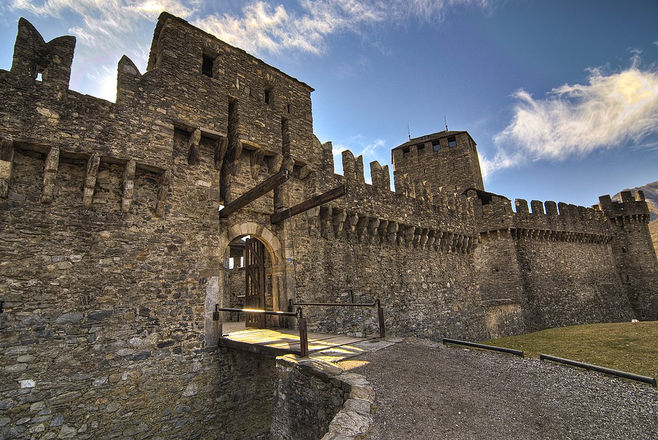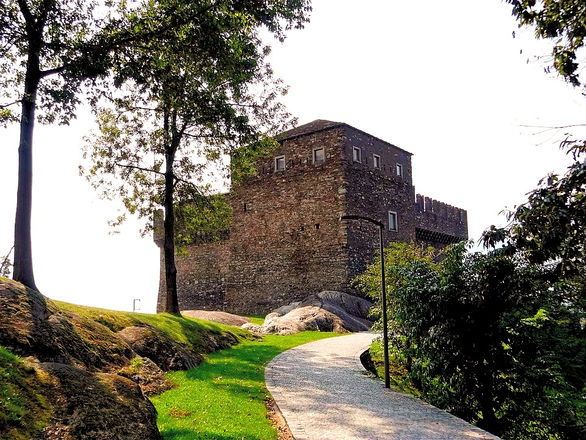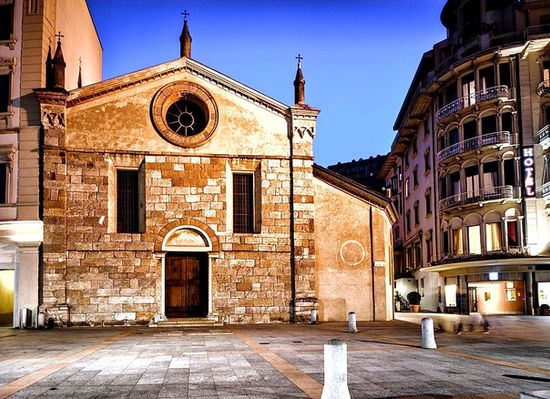
Bellizona
One of the most tranquil Swiss city in the Italian speaking region, lies on the Ticino River, at the entrance of three passes, St. Gotthard, Lukmanier, and St. Bernardino. With its strategic position, the Romans realised the importance of the city, and built the first fort here in the late 1st century BC.
The town is dominated by three 15th century castles and the 13th century defensive wall that barred the Ticino Valley. The castles as we see it today were built in various stages over the centuries. Construction began in the 13th century; it was enlarged in 15th century by the Sforza Dukes of Milan, to prevent the Swiss confederates from advancing southwards.
The mighty castles, defensive walls, sturdy towers and medieval gates of these imposing fortresses never cease to astonish visitors. They were lisited as UNESCO World Heritage Sites since the year 2000 as the most enchanting examples of fortified medieval architecture of the Alps.
Today, the castles house various museums covering from the Neolithic village, archaeological, folk art, into the 20th century. After admiring the castles, take a stroll along ramparts, enjoy the stunning views of vine-streaked mountains and castle-studded hills.
Castelgrande
Castelgrande, the oldest and mightiest castle, was constructed above the town center over the old Roman fort. It offers a beautiful view over the Old Town and the surrounding area.
Castello di Montebello
The second castle of Bellinzona, built from the 13th to 15th centuries is the most impressive example of the art of fortification. With its drawbridges and ramparts, is like going back in medieval time. Views from the castle are stupendous from atop.
Castello di Sasso Corbaro
Perched high on a wooded hillside, the square-shaped Castello di Sasso Corbaro was constructed within half a year in 1479 to reinforce the defenses of the valley after a battle. Another epic view of the surrounding area. You can even sight Lake Maggiore from atop on cloudless days.
Old Town
The old town is worth exploring, for its beautiful Italian-style town houses. The Renaissance style Town Hall, constructed between 1921 and 1923,featuring some of the unique modern designs coupled with existing features that give this Palace an old world charm. The magnificent Church of St Peter and St Stephen in Piazza Collegiata, famous for its large Renaissance façade made of Castione stone decorated with a rose window. Don’t miss out on a visit to the delightful Piazza Indipendenza , relax and stop for a coffee or tucking into an ice cream.
Lugano
Lugano, the Mediterranean heart of Switzerland, lies on the shores of Lake Lugano, with Monte Bre and Monte San Salvatore as backdrop, offering many stunning views for great pictures opportunity. It is in the Italian-speaking region of Switzerland, a more laid-back lifestyle than you'll find elsewhere in Switzerland.
Enjoy the charm of this small little town, complemented by lovely parks, villas and Lombardy-style buildings.
Walk through the city center, to discover traditional and new cultural aspects of the city, including architectural monuments, modern constructions and its characteristic alleyways.
Lake Lugano
A glacial lake situated on the border between southern Switzerland and northern Italy. Framed by the surrounding mountains, greenery parks and elaborate gardens border the shore, shaded by trees and brightened by flower, every angle on the promenade are postcard views of the lake. Go for an excursion by paddle steamer round the lake, or other water-based activities, or just sit back, relax and enjoy the view.
Riforma Square ( Piazza della Riforma)
The main square of the city, flanked by numerous bars, cafés restaurants, old buildings including the Neoclassic Palazzo Civico (Town Hall). It's considered the city's elegant "living room".
Throughout the year several different events, including Easter, Estival Jazz, Autumn Festival and Christmas markets, take place here in the Square.
Independence Square (Piazza Indipendenza)
This square with the obelisk erected in memory of the 1798 battle against Napoleon’s Cisalpine troops, which resulted in Ticino’s entrance into the Helvetic Confederation in 1803.
San Lorenzo Cathedral
San Lorenzo Cathedral of Roman origins built in the 9th century, was enlarged in the 13th and 14th centuries and restored between the 15th-16th centuries. The church was declared a Cathedral in 1884. A remarkable building with a Renaissance facade. Inside there are many frescoes and valuable Baroque decorations.
Church Santa Maria degli Angeli
The church of a former convent, the exterior of the Church of Santa Maria degli Angeli looks rather sober, but the interior is spectacular and certainly worth a visit. An absolutely stunning fresco covering the wall, painted in 1529 by Bernardo Luini, a student of Leonardo Da Vinci, depicting Christ’s Passion and Crucifixion. It is considered to be the finest Renaissance fresco in the whole of Switzerland.
Via Nassa
Via Nassa is one of Lugano’s historical streets – now lined with upmarket boutiques, sophisticated shops, jewellery shops and department stores. A true shopping-lovers’ street!
Monte San Salvatore
Lugano’s own mountain, at 912 meters high, allows you to enjoy a moment of serenity, with panoramic vistas of the entire Alps, and the pristine lake in the foreground. The view is really awe-inspiring.
A perfect destination for nature lovers . Scenic trails allow you to enjoy all the features of slopes of the mountain, unpoilt surroundings and rugged forest. You can take the funicular up to the summit of the mountain from Lugano's lakeshore station.
Swissminiatur
At the foot of Monte San Salvatore is an open-air Swissminiatur museum, renders all of Switzerland’s famous landmarks in miniature. The models are surrounded by flowerbeds and woodland. An ideal retreat as well as a favorite for families.



























